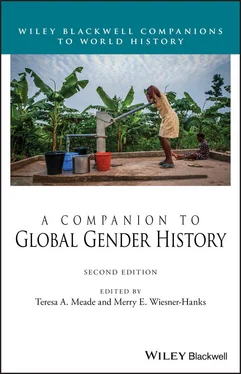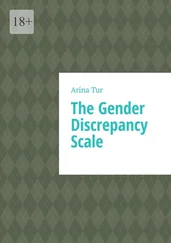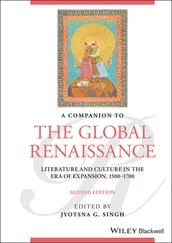Kumkum Royteaches ancient Indian social history at the Centre for Historical Studies, Jawaharlal Nehru University, New Delhi. Her areas of interest include political processes and institutions, gender studies, studies of marginalized groups, and pedagogical issues. She is the author of The A–Z Guide of Ancient India (2010) and Questioning Paradigms, Constructing Histories (2019).
Mary D. Sheriff(1950–2016) was the W.R. Kenan, Jr. Distinguished Professor of Art and department chair at the University of North Carolina at Chapel Hill. Her work was in eighteenth‐century art history of France, specializing in gender, sexuality, and creativity. Her books include The Exceptional Women: Elisabeth Vigée‐Lebrun and the Cultural Politics of Art (1996), Moved by Love: Inspired Artists and Deviant Women in 18th Century Art (2003), and the posthumously published Enchanted Islands: Picturing the Allure of Conquest in Eighteenth‐Century France (2018).
Deborah Simonton(FRHistS) is Associate Professor of British History, Emerita, University of Southern Denmark, and Visiting Professor, University of Turku. She leads the research network Gender in the European Town and is General Editor of The Routledge History Handbook on Gender and the Urban Experience (2017), and The Cultural History of Work (6 vols., Bloomsbury, 2018) with Anne Montenach. She is currently completing a volume for Routledge on Gender in the European Town .
Charles Sowerwineis Professor of History, Emeritus, at the University of Melbourne. His Sisters or Citizens? Women and Socialism in France since 1870 (Cambridge, 1982, 2008) was the first work of an Anglophone author published by the Presses de la Fondation Nationale des Sciences Politiques (1978). Recent publications include, with Susan Foley, A Political Romance: Léon Gambetta, Léonie Léon and the Making of the French Republic, 1872–1882 (2012), and the third edition of France Since 1870: Culture, Politics and Society (2018).
Kate Kelsey Staplesis Associate Professor of History at West Virginia University interested in the gender and social history of urban spaces in medieval Europe, as well as their material culture. She has published Daughters of London: Inheriting Opportunity in the Late Middle Ages (2011) and a number of articles on fripperers, upholders, and the trade in secondhand clothing and goods in late medieval Paris and London.
Judith E. Tuckeris Professor of History at Georgetown University, former Editor of the International Journal of Middle East Studies (2004–2009), and former president of the Middle East Studies Association (2017–2019). She is the author of Women in 19th Century Egypt (1985), In the House of the Law: Gender and Islamic Law in Ottoman Syria and Palestine (1998), and Women, Family, and Gender in Islamic Law (2008), and is co‐author of Women in the Middle East and North Africa: Restoring Women to History (1999).
Bella Vivanteis Professor of Classics, Emerita, at the University of Arizona. Her research has focused on women’s roles in ancient Greece and the eastern Mediterranean, and she has developed an innovative, gynocentric approach to studying the many non‐Western features of ancient cultures that incorporates Native American women’s research in “The Primal Mind,” in Feminism and Classics (1992). Many of her works reveal antiquity’s dynamic qualities to both scholarly and general audiences, including her translation of Euripides’s Helen in Women on the Edge (1999) and Daughters of Gaia: Women in the Ancient Mediterranean World (2006), and, as scriptwriter and lead actor, Women, Marriage and the Family in Ancient Greece (2012 dvd).
Anne Walthallis Professor of History Emerita at the University of California, Irvine. She has edited or co‐edited a number of volumes on women, including Women and Class in Japanese History (1999) and Servants of the Dynasty: Palace Women in World History (2008). She is also the author of The Weak Body of a Useless Woman: Matsuo Taseko and the Meiji Restoration (1998).
Barbara Winslowis Professor Emerita, Brooklyn College, where she was the Director of the Women's and Gender Studies Program as well as the Coordinator of the Secondary Social Studies Program. She is also the founder and Director Emerita of the “Shirley Chisholm Project of Brooklyn Women's Activism, 1945 to the Present” ( chisholmproject.com). Her many publications include Sylvia Pankhurst: Sexual Politics and Political Activism, (1996, reprinted 2021), Shirley Chisholm: Catalyst for Change (2013), Clio in the Classroom: A Guide to Teaching US History (with Carol Berkin and Margaret Crocco; 2009), and with Julie Gallagher, Reshaping Women's History: Voices of Non Traditional Women Historians (2018).
Christine D. Worobecis Distinguished Research Professor Emerita at Northern Illinois University. She is the author of Peasant Russia: Family and Community in the Pre‐Emancipation Period (1991) and Possessed: Women, Witches, and Demons in Imperial Russia (2001). She also co‐authored Russia's Women: Accommodation, Resistance, Transformation (1991).
Marcia Wrightis Professor of History Emerita at Columbia University. Her publications include African Women and the Law: Historical Perspectives , co‐edited with M.J. Hay (1982) and Strategies of Slaves and Women: Life Stories from East‐Central Africa (1993).
Teresa A. Meade and Merry E. Wiesner‐Hanks
When a book project, no matter how long or short in the making, comes to an end, authors confront a final step of choosing an image for the cover, a task that is often pleasant, but also challenging. For this new edition, we wanted the cover to illustrate the long temporal sweep of gender history and the diversity of topics contained in the book, as well as highlight their global reach. The image we selected has just the geographic and chronological breadth we sought. In it a woman in the rural Ghanaian village of Mowire fills buckets of water that she and her daughter, who sits nearby, will carry a long distance. According to Nancy Borowick, who took the photograph, women like this along with “children as young as three or four head to the nearest well multiple times during the day to pump water for their homes for bathing, cooking and drinking.” This scene, repeated in poor countries throughout the world where water is scarce, expensive, and time‐consuming to obtain, conveys the reality that collecting, pumping, hauling, and standing in line for water is gendered work. Historically, women drawing or carrying water appear on early Chinese scrolls, ancient Etruscan jars, and classical Greek vases. Stories from the Bible feature women at wells, while traditional Indian songs and dances portray women getting water from the Ganges. Just enter “women carrying water” in a computer search engine and you can spend hours in front of a screen looking at “Indian Women Carrying Water,” “Bedouin Women Carrying Water,” “Maasai Tribal Women Carrying Water,” and so on. You could even buy enough tote bags and pillow covers with reproductions of classical and contemporary art portraying women toiling with water to fill an entire house.
According to the United Nations, women and girls worldwide spend 200 million hours a day collecting water, time that takes away from caring for their families, attending school, taking care of themselves, or doing anything else. For many women, this can mean as much as five hours daily traveling over rugged terrain transporting water, sometimes in dangerous conditions. Women balance huge jugs on their heads while pregnant and carrying children, or lead youngsters who are themselves loaded down with bottles and cans. Women and children also suffer the direst effects of contaminated water since toxins are absorbed by pregnant women, pass into breast milk and on to infants and young children. This is true throughout the world, from isolated villages in Ethiopia to metropolitan cities such as Flint, Michigan. But women are also fighting for clean water: women protested contaminated city water in Flint, and as Jocelyn Olcott explains in her chapter in this volume, Aymara women led the fight against the Bolivian government’s privatization of the water system and sale of water rights to the US‐based Bechtel Corporation in 1997. Mexican women organized campaigns to bring clean water to cities and villages, a basic human need which the outbreak of the COVID‐19 pandemic – in which handwashing is the most important precaution – made even more evident. On the cover of this book an African woman’s muscles strain as she fills multiple buckets at a communal well, a task representative of gendered labor for all time. But she also suggests an area in which women are working toward a different future, as they do in many chapters in this book.
Читать дальше












